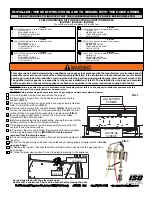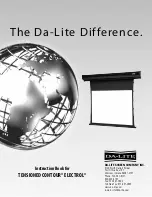
Dimensions
All measurements are listed in millimeters (inches), unless noted otherwise.
Windows
The R-GAGE sensor can be placed behind a glass or a plastic window, but the configuration must be tested and the
distance from the sensor to the window must be determined and controlled prior to installation. There is typically a 20%
signal reduction when the sensor is placed behind a window.
Polycarbonate at 4 mm thickness performs well in most situations, but the performance depends on filler materials.
Thinner (1 to 3 mm) windows have high reflection. The amount of reflection depends on the material, thickness, and
distance from the sensor to the window.
Locate the sensor in a position of minimum reflection from the window, which will repeat every 6.1 mm of distance
between the sensor and the window. The positions of maximum reflection from the window repeat between the minimums,
and decrease in effect until the window is approximately 150 mm (5.9 in) away. Consult the factory for pre-tested window
materials which can be used at any distance without issue.
Additionally, the face of the window should be protected from flowing water and ice by use of a flow diverter or hood
directly above the window. Falling rain or snow in the air in front of the window, light water mist, or small beads on the
face of the window are typically not an issue. However, a thick, continuous surface of water or ice directly on the face of
the window can be detected as a dielectric boundary.
The Q240WS is a clip-on hydrophobic weather shield accessory specially designed to meet these requirements.
R-GAGE
™
Q240RA-AF2 Sensor
P/N 184564 Rev. A
www.bannerengineering.com - Tel: +1-763-544-3164
7



























